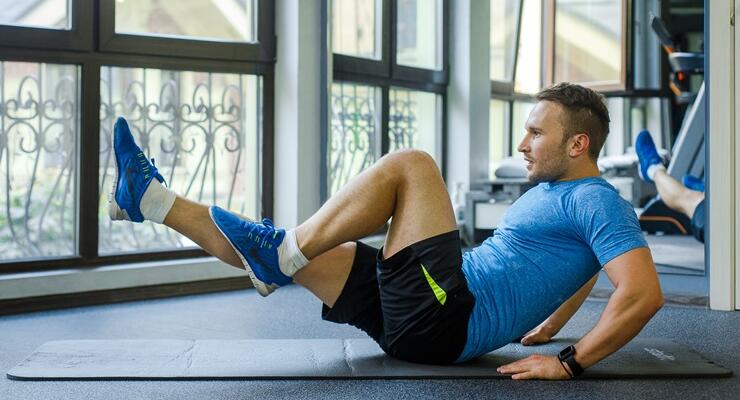Understanding Weight Loss and Exercise
Weight loss fundamentally revolves around the energy balance equation, which states that to lose weight, one must burn more calories than they consume. Exercise plays a pivotal role in this process by increasing the number of calories burned through physical activity. Engaging in regular workouts not only aids in achieving a caloric deficit but also fosters an overall healthier lifestyle.
Different types of exercises contribute uniquely to weight loss. Cardiovascular workouts, such as running, cycling, or swimming, are particularly effective in burning calories during the activity itself. These aerobic exercises elevate the heart rate, enhancing cardiovascular endurance while promoting significant caloric expenditure. On the other hand, strength training focuses on building muscle mass, which can positively influence the resting metabolic rate. This means that individuals with greater muscle mass tend to burn more calories at rest, providing a long-term weight loss advantage.
High-intensity interval training (HIIT) represents another compelling exercise option. This method alternates short bursts of intense activity with rest or low-intensity periods, leading to higher calorie burn both during and after the workout due to the afterburn effect. Incorporating HIIT into a fitness routine can maximize calorie expenditure while also improving cardiovascular health.
Consistency in exercise is crucial for weight loss success. Regular physical activity not only promotes a caloric deficit but also supports metabolism and aids in muscle recovery. Moreover, exercise complements a balanced diet, as it helps to manage cravings, enhance mood, and bolster motivation. Prioritizing both a structured workout routine and mindful eating habits forms the cornerstone of any effective weight loss journey, allowing individuals to progress towards their fitness goals.
Beginner-Friendly Weight Loss Exercises
For individuals embarking on a weight loss journey, it is crucial to start with exercises that align with their fitness level. Engaging in beginner-friendly workouts not only boosts motivation but also lays a foundation for more advanced routines. Treadmill walking is a highly effective starting point. It allows you to control the speed and incline, making it suitable for all fitness levels. Aim for 20-30 minutes per session, three to five times a week. This activity is gentle on the joints and can be easily customized to match your comfort level.
Another excellent option for beginners is the stationary bike. This exercise provides a low-impact cardiovascular workout that burns calories efficiently. Start with short sessions of 10-15 minutes, gradually increasing the duration as endurance improves. Maintaining a steady yet manageable pace is key, and using the bike’s resistance settings can enhance the exercise’s intensity as you progress.
Incorporating bodyweight exercises, such as squats and lunges, also benefits beginners. These movements engage multiple muscle groups and cultivate strength without the need for additional weights. For squats, position your feet shoulder-width apart and lower into a chair-like stance while keeping your back straight. Begin with 2-3 sets of 8-12 repetitions. Lunges involve stepping forward and lowering your body until both knees are bent at a 90-degree angle. Complete 2-3 sets of 6-10 lunges per leg.
It is essential to focus on proper form during these exercises to prevent injuries. Additionally, consider modifications for any movements that feel too challenging, such as performing squats onto a box to decrease the range of motion. Establishing a consistent workout routine helps build confidence and allows for gradual progression, which is vital for sustained weight loss.
Advanced Weight Loss Exercises for Accelerated Results
Advanced exercises are crucial for individuals looking to accelerate their weight loss journey, especially in a gym setting. Incorporating complex movements such as deadlifts, barbell squats, kettlebell swings, and plyometric exercises can significantly enhance calorie burn while building strength. These exercises require proper form and technique to maximize effectiveness and prevent injuries.
The deadlift, for instance, engages multiple muscle groups, including the back, legs, and core. To perform a standard deadlift, position your feet shoulder-width apart, grip the barbell with both hands slightly outside your legs, and lift while keeping your back straight. Common mistakes include rounding the back and lifting with the arms instead of the legs. Deadlifts not only strengthen muscles but also boost metabolism, promoting fat loss.
Barbell squats serve as another potent exercise. Start with the barbell on your upper back, feet shoulder-width apart. Maintain a straight back as you lower your body into a squat. Avoid leaning too far forward or allowing the knees to extend beyond the toes to minimize strain. Barbell squats increase lower body strength while contributing to core stability, making them essential for advanced fitness routines.
Kettlebell swings offer a dynamic way to enhance cardiovascular fitness alongside strength building. The movement involves swinging a kettlebell from between the legs to shoulder height, engaging the hips, core, and arms. A common pitfall is using too much arm strength instead of harnessing the power from the hips, which can limit effectiveness.
Plyometric exercises, such as box jumps, are effective for improving explosive strength and cardiovascular endurance. These exercises involve jumping onto a raised platform, demanding coordination and control. Ensure proper landing mechanics to prevent injury and maximize benefits.
To achieve maximum weight loss results, it’s essential to combine strength training with cardiovascular workouts and High-Intensity Interval Training (HIIT). This combination boosts overall calorie expenditure, leading to more significant weight loss. Furthermore, varying your routine is crucial to overcoming fitness plateaus, as the body can adapt to repetitive movements over time.
Tracking progress is vital. Consider maintaining a workout log to monitor strength gains, endurance improvements, and changes in body composition. By incorporating these advanced exercises into your gym routine, you can facilitate accelerated weight loss while enhancing overall fitness. Emphasize proper form and variety to ensure sustainable results.
Creating a Balanced Workout Plan
Creating a balanced workout plan is essential for anyone pursuing weight loss, whether they are beginners or more advanced fitness enthusiasts. A well-rounded approach should include a mix of strength training, cardiovascular exercises, and flexibility routines. Strength training helps build muscle, which in turn boosts metabolism and contributes to calorie burn even at rest. Incorporating exercises such as squats, lunges, and push-ups can efficiently engage multiple muscle groups. For beginners, it is advisable to start with bodyweight exercises or light weights to avoid injury while gradually increasing intensity.
Cardio exercise plays a crucial role in any effective workout plan aimed at weight loss. Activities like running, cycling, or using the elliptical can help increase heart rate and enhance calorie expenditure. For variation, alternate between high-intensity interval training (HIIT) and steady-state cardio to keep workouts interesting and effective. Flexibility routines, including yoga or dynamic stretching, should not be overlooked. They contribute to overall body functionality, help prevent injuries, and support recovery after more intense workouts.
When developing a workout schedule, it is essential to set realistic goals, ensuring they are achievable yet challenging. Aim for a blend of workout types throughout the week, incorporating rest days to allow the body adequate time to recover. Monitoring progress can keep motivation high, so consider using fitness apps or journals to record achievements, which can include tracking weight lifted, distance run, or even the consistency of attendance. As fitness levels improve, do not hesitate to adjust the plan to avoid plateaus and keep the regimen effective.
Integrating nutrition alongside exercise can significantly enhance weight loss efforts. A balanced diet rich in proteins, healthy fats, and complex carbohydrates supports recovery and provides energy for workouts. Together, these elements contribute to achieving sustainable weight loss results, making the journey both enjoyable and rewarding.


